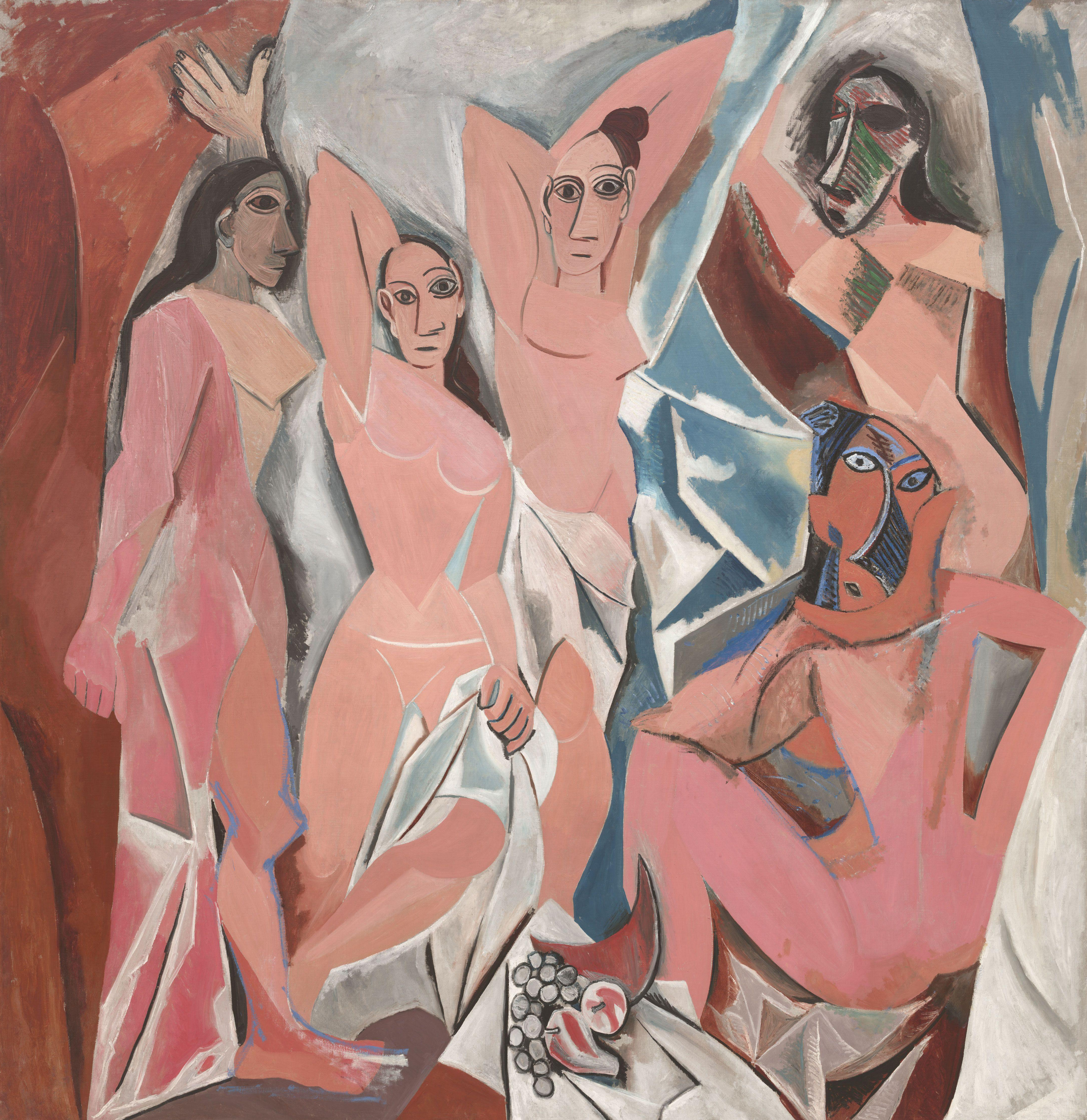Analysis of Les Demoiselles d’Avignon by Pablo Picasso
Historical Context
Les Demoiselles d’Avignon, painted in 1907, emerged during a period of profound upheaval and transformation in the early 20th century. This was a time of rapid industrialisation, political tensions, and groundbreaking advancements in science and technology. Artists across Europe were questioning traditional forms of representation, seeking new ways to depict an increasingly fragmented and dynamic world. Pablo Picasso, inspired by African and Iberian art, as well as Cézanne’s post-impressionist explorations, crafted a revolutionary piece that would lay the groundwork for the cubist movement.
Techniques Utilised
Picasso utilised geometric abstraction and perspective fragmentation in Les Demoiselles d’Avignon, challenging the viewer’s perception of space and form. The figures are constructed with angular planes and sharp lines, reflecting the influence of African masks and Iberian sculpture. Colours are bold yet earthy, eschewing naturalism to emphasise structural composition. The canvas is a departure from conventional depth and perspective, introducing a flat, almost collaged visual effect that defies traditional artistic norms.
Impact on Cubism and the Broader Art World
Les Demoiselles d’Avignon marked a pivotal shift in the evolution of modern art. It is widely regarded as the precursor to analytical cubism, developed jointly by Picasso and Georges Braque. This work redefined artistic boundaries, influencing generations of artists and movements such as Futurism and Abstract Expressionism. Its daring rejection of realism and embrace of abstraction challenged audiences and critics, solidifying Picasso’s reputation as a visionary.
Interpretation and Meaning
The painting portrays five female figures, often interpreted as prostitutes from a brothel in Barcelona. The distorted forms and confrontational stares force viewers to confront themes of sexuality, mortality, and the human condition. The use of African-inspired motifs reflects Picasso’s engagement with primitivism, which he saw as a means to challenge Western artistic conventions. The fragmented faces evoke both allure and menace, capturing the duality of attraction and repulsion.
Connection with the Artist
Les Demoiselles d’Avignon represents a watershed moment in Picasso’s artistic journey. Transitioning from his Blue and Rose periods, the work signifies his growing commitment to exploring abstraction and breaking free from traditional representational art. It reveals Picasso’s relentless experimentation and his desire to redefine the very nature of art itself.
Conclusion and Reflection
Les Demoiselles d’Avignon remains a cornerstone of modern art, symbolising the radical transformation of artistic paradigms in the 20th century. Its innovative techniques and bold vision continue to inspire and challenge contemporary artists and audiences. The painting’s timeless resonance reminds us of the power of art to disrupt, innovate, and redefine human understanding.
